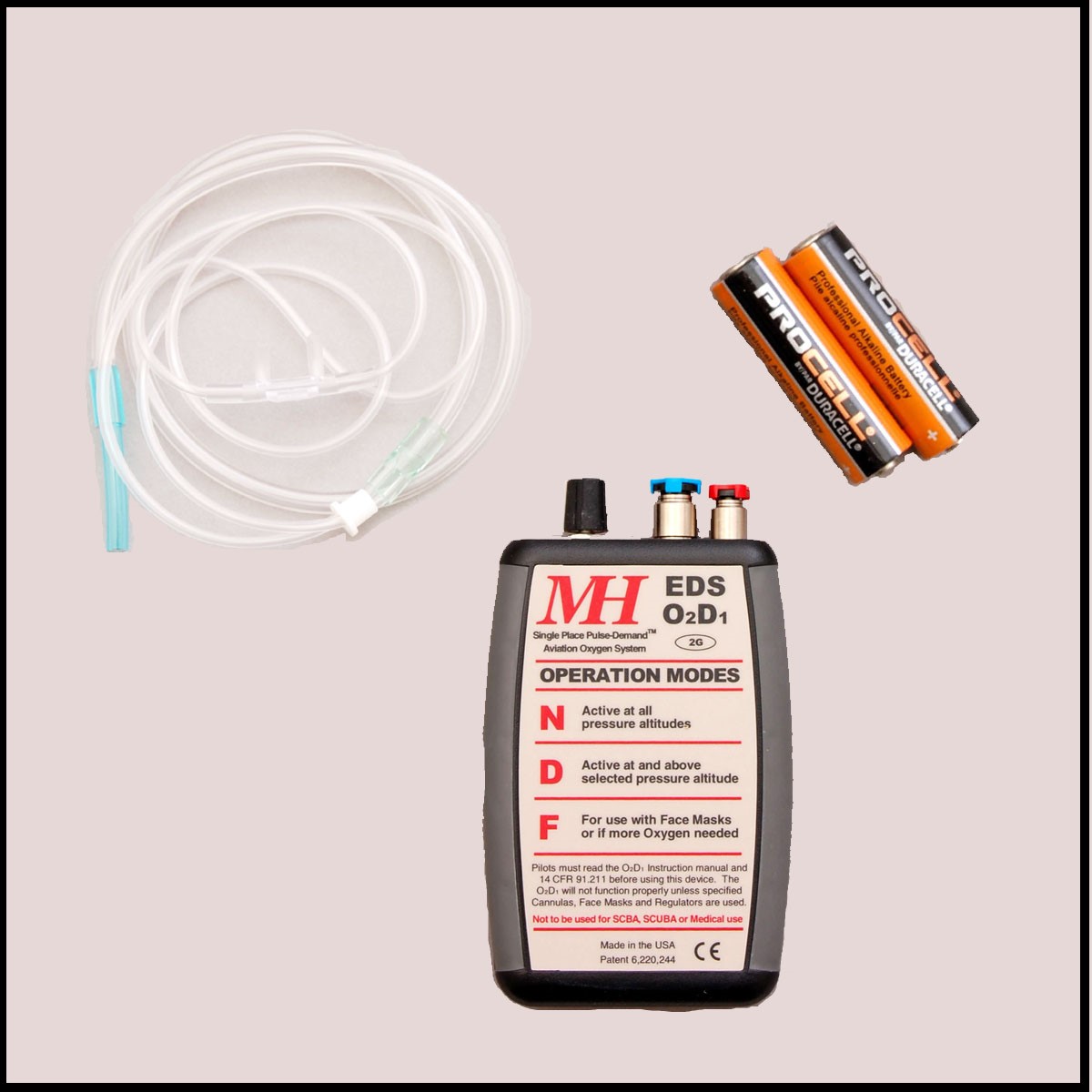EDS O2D1 & O2D2 Maintenance Program FAQ
EDS O2D1 & O2D2 Maintenance Program FAQ
Q. I have one of your portable MH-EDS PULSE-DEMAND™ units. It seems to be operating just fine, should I send it in for any type of routine service or testing?
A. Yes. Even though your pulse-demand unit will generally let you know if there is a problem and has been designed to be relatively maintenance-free, except for batteries, it should be sent in on a regular basis for performance inspection and service. This includes the in-line or screw–on regulator you use with the EDS. Think of it like performing an annual inspection on your aircraft.
Q. Why has this not been mentioned before and how often does MH recommend this be done?
A. This service program has been derived from usage and servicing data acquired over the last 20 years that the technology has been in production and fielded. From this, Mountain High has recently decided on a routine service program that should be accomplished once every two years (biennial). This must include the remote pressure regulator you are currently using with the EDS unit(s). We can only service MH manufactured regulators.
Q. What is done to my EDS unit and regulator when I send them in for service.
A. From time to time we make engineering improvements during our production. These improvements may include changes to hardware or firmware or both. This is our way of passing on our latest improvements to you. Also routine service parts such as seals, seats, O-rings and filters are inspected and replaced. Your EDS unit(s) and regulator(s) are thoroughly inspected and tested on our ATP test set to ensure they are operating to specified standards. This will help to ensure your system is operating properly and upgraded to the latest specifications.
Q. How much does it cost me?
A. The cost for this service is US $125.00 plus shipping. This includes all firmware and hardware upgrades. Routine service parts are also included. Any other parts replaced due to damage or field use will be subject to an additional charge.
Q. How long should I expect this service to take?
A. Once we receive your unit, in-house turn-around time is generally (10) to (12) working days.
Q. I have sent my EDS unit(s) back once before for a problem of leaking or not responding at certain altitudes, but it came back with the same problem. Why ?
A. Many problems perceived to be with the EDS unit(s) have in fact turned out to be with the regulator. This has mostly been the case if you are not using the regulator designed for the EDS or are connecting directly to a built-in system installed in your aircraft. This is why you must include the primary reducing regulator you are using (ours or not) or tell us that you are connecting the EDS unit(s) directly to your aircraft’s built-in system without our inline regulator.
Many other regulators do not regulate the pressure adequately for the EDS unit(s) to operate and deliver the proper amount of oxygen. Damage can be done to the breathing sensor in the EDS unit(s) if the operating pressure is too high. Additionally, we have seen many situations where customers connect the EDS unit(s) to the connectors and tubing that came with their aircraft, then plug them into the high-pressure outlets in the aircraft. This has caused a lot of confusing problems because these connectors generally have flow restriction orifices. In many cases this has allowed the EDS unit(s) to check out okay at ground level when the pulse response is low, but then complain with flow-fault alarms at higher cruising altitudes. Additionally, this problem can be difficult to reproduce because the EDS unit(s) operate with pressure altitude and not barometrical-corrected altitude.



